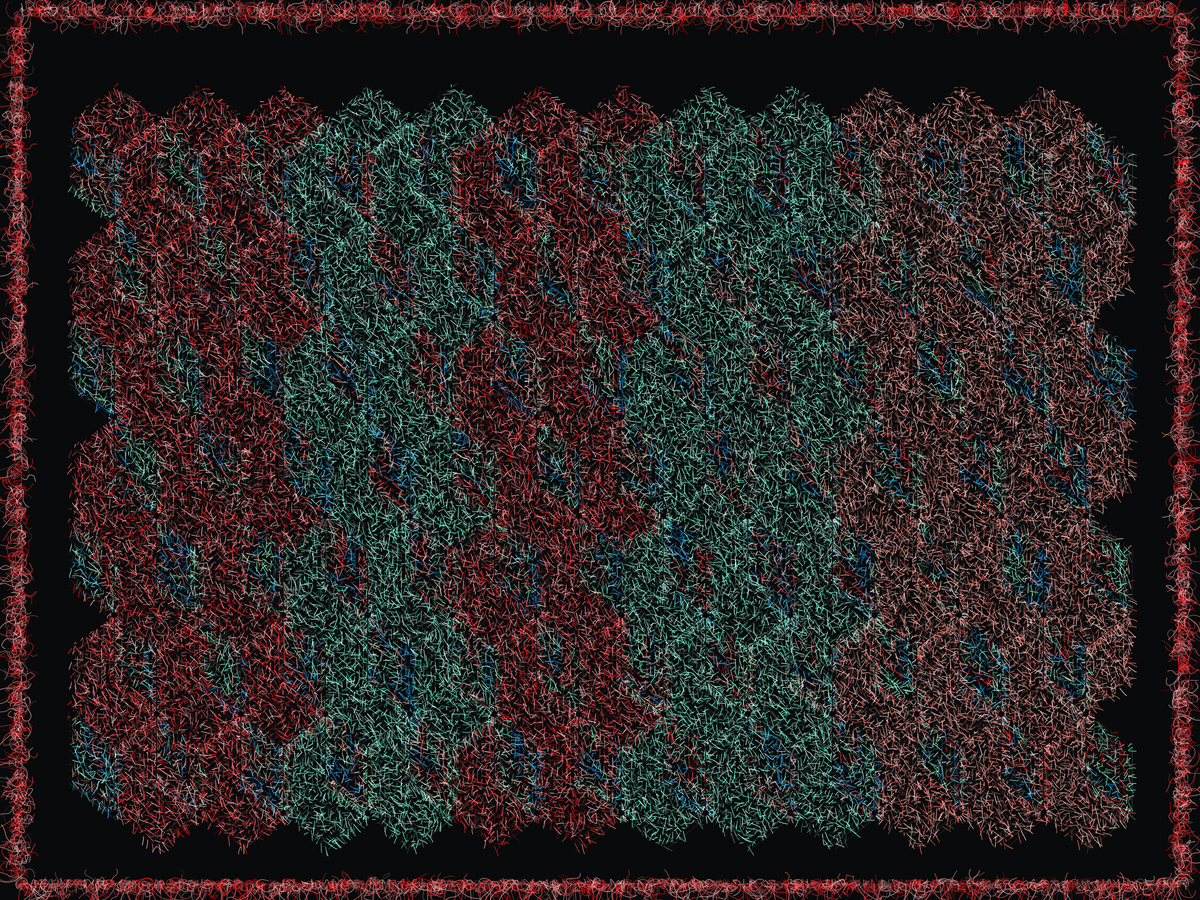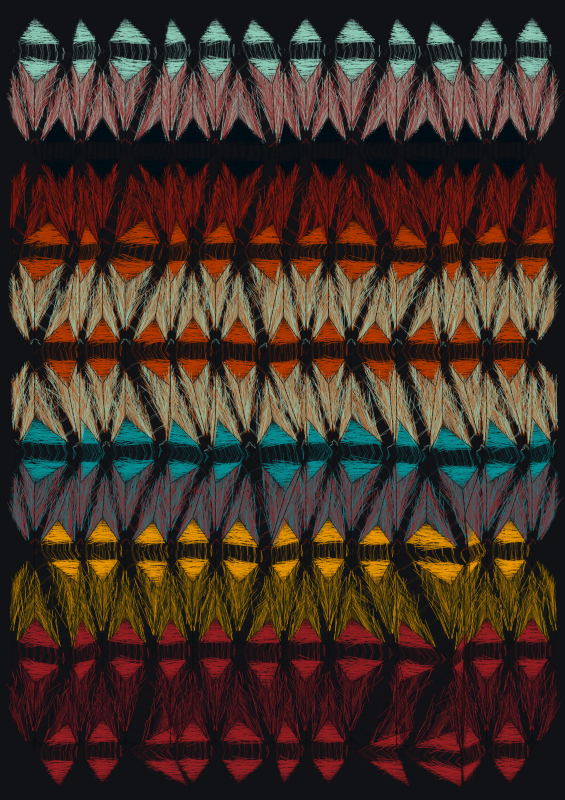
A Simple Fail
written by bfos.art
project name project name project name
Background
Upon completion of my first project, Adherence, I had the full intention to take a step back and release a "simple" project for my follow-up. I fully believe that simple projects can be just as striking and beautiful as more complex projects. Adherence, while successful, had gotten away from me as I struggled to cram in all of the neat ideas that would continually pop into my mind.
I started by looking for simple inspirations. I took note of several ideas over the next few weeks. One evening, while out to dinner with my family at a local sushi restaurant, I found inspiration in the design they had etched into their windows. It doesn't get much more simple than this; I'm sure you've seen this design several times today! Depending on how you look at the tiling design, you may see stars, triangles, or cubes.
To be honest, I wasn't so sure this would be the foundation of my next project, but I thought it would be fun to see how I would go about coding the recreation of the design. I decided to create a simple grid and calculate the algorithm for determining which points of the grid should be connected to match the pattern. I would then let randomization take part as parameters in the algorithm to mix things up in interesting ways. This worked very well and is still roughly how A Simple Fail is generated.
The Failure
While the foundations are all very basic, I once again failed completely at keeping it simple. I worked on multiple techniques for filling the tile faces. I struggled with different ways to introduce controlled chaos into the project. I developed brand new (for me) methods for drawing imperfect lines, circles, and hatchings. I introduced multiple ways of playing with color throughout the faces of the tiles. With each new element, I did so as if I were just playing around on the P5 Playground. The result was a very unruly code-base which eventually caused me a significant amount of pain. You may be familiar with the programming principle called DRY which stands for Don't Repeat Yourself. Well, I repeated myself.....a lot! Instead of stopping to clean things up, I could only find motivation to immediately improve my outputs. In general, I piled bad code on top of bad code.
What was supposed to be a simple project that I would be able to release in a couple of months at most ended up taking me nearly three quarters of a year to reach the standards of a project that I would be excited to mint as a collector. While the development of this project was a failure in at least one key way, failure isn't all bad. I am thoroughly excited about the quality of the outputs and I hope you will receive the same enjoyment from such A Simple Fail.
Core Project Features
Draw Styles: Human and Computer
I enjoy generative artwork that incorporates elements of both human and digital artistry. A Simple Fail does so by using both "perfect" and simulated human drawing styles.
Tile Style: More Imperfections
I found it enjoyable to find different way of disrupting the tiling pattern to varying degrees.
Aspect Ratios
My first project, Adherence, had a single 1:1, square aspect ratio. A Simple Fail incorporates multiple aspect ratios as a feature. Additionally, any output can be altered to adapt to the screen size of whatever device you are viewing on with a press of the "A" key. Press "A" a second time to rotate the adaptive output 90 degrees. This is in case you are on a device that you would prefer to see the output rotated. Press "A" again to return to the original aspect ratio.
You can accomplish the same thing via the use of a url parameter:
?params=1 will return the adaptive output
?params=2 will return the rotated adaptive output
Inspirations
I thought it would be fun to share a list of projects that have, in one way or another, been an inspiration for me and A Simple Fail. Some of these inspirations will be very well known, but I hope that this call out will at least introduce a few new eyes to projects that they haven't seen before!
(All of these pieces showcased are own by me!)
project name project name project name
project name project name project name
project name project name project name
project name project name project name
project name project name project name
project name project name project name
project name project name project name
project name project name project name
project name project name project name
project name project name project name
project name project name project name
project name project name project name
project name project name project name
project name project name project name
SOL - 365 by Cory Haber - https://foundation.app/collection/sol-365
Here is a selection of random outputs to give you a greater understanding of the types of outputs you might expect to mint!
